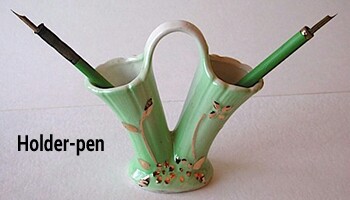GONE WITH THE WIND
It is amazing how popular items of everyday use disappear over the lifetime of a person.
There was a time when almost every household kept a small bottle of tincture-iodine or spirit. If you hurt yourself while playing or in house-work - a minor cut or abrasion with a bit of bleeding- it was this stuff that you dabbed with cotton wool on the bruise as an antiseptic. And as it gave you hell of a burning sensation, you danced for a while with a musical yelp after it touched the wound. Even some films had that dancing yelping scene (Saira banoo in film JUNGLEE for instance!). Tincture iodine has disappeared.
Doctors, in the days gone by, did not send you for diagnostic 'tests' as a matter of routine.
Our Dr. Sinha from my childhood days had his 'Modern Clinic' close to our house. Whenever my father took me to his clinic, I would climb a stool, which appeared a bit high, and he would sit across and examine me - my pulse, nails, tongue, eyes, the lower eye lids. He would examine my throat in torch light and would tap below my knee caps to see knee-jerk reaction.
I would then lie down on the leather coach and pull my shirt up. He would tap the entire chest with 'knuckles and fingers'. He would also probe the liver region with his fingers. It hurt sometimes!
I do not see such examination now a days.
He wrote his prescription with a blue holder-pen, picking it up from a transparent glass ink-stand and dipping it in the blue ink-well. He passed this paper to the compounder in the adjascent room through a cute little semi-circular 'window'. I would usually get one small bottle of a 'mixture' with doses marked with a vertical white strip of paper. There were paper wrapped individual small doses of some powders too.
Antibiotics and a horde of patent medicines, and an army of 'medical representatives', came later and they knocked the blessed compounders out of their jobs!
Now a days there are hardly any General Practioners seen. Everyone has become a specialist and is mainly concerned with his part of human body. You are usually referred to other specialists for other parts - a sort of continuous medical musical-chair!
There were no ball-point pens in those days. Good fountain pens were unbelievably smooth. These 'silky' writing instruments were expensive. Dr sinha too had a gold cap Waterman's pen in his shirt pocket but used ordinary holder-pens for writing prescriptions.
Blotting papers, another item not seen now, were in use in those days for absorbing extra ink that did not quickly dry. There were all sorts of beautiful blotter cards. These postcard-size blotter cards had a glossy nice picture on one side and the blotting paper on the otherside. Every doctor got a good stock of them from leading pharma companies as part of brand-promotion and we would get them free for use in our school. We always wrote with holder-pens using pink colour copper G- nibs and we constantly used blotters. There was a brass ink-well on the upper right corner of each desk in the school.
Fountain pens were, then, very expensive , an ordinary pen costing over Rs 500/- in today's value. The cheapest of the good pen, like Sheaffers, Parker or Waterman's, were well over Rs 8000/- in todays value!
Tincture iodine, fountain pens, ink-wells, holder-pens and blotter cards are not the only things which have passed into history.
Senior citizens would recall a very common item of stationery in use then - the COPYING PENCIL. This pencil, which made water purple when the tip was wet, had a very hard and strong lead (graphite) stick. The lead tip would not break even when writing over a number of sheets, with carbon paper in between. Yes it was used for manually making carbon copies of letters and must have come into use before cheaper typewriter became available.. They were in the market, and in use in offices, till the sixties.
Table clocks (The winding ones) have also disappeared. Westclox was cheaper and popular but the better ones were German clocks. Wrist watches were Swiss-made and a standard one used to cost over twenty thousand in today's rupees. Unlike the highly accurate but inexpensive quartz watches of today, the clocks and watches lost or gained time over a month and had to be time-set once in a while. People used to set the time with the time-beeps before the All India Radio news or the gongs of Big Ben before the BBC news. We had to 'wind' the wrist watches and clocks everyday before going to sleep.
If you visit any old houses in north India you will notice that most of them had a fireplace in the drawing room with an ornamental cornice above it. And these houses had two chimneys - one on the drawing room roof and the other on the roof above the kitchen. These chimneys, which were for smoke from burning coal or wood to escape into the sky, are not seen now. Firewood has passed into history with the popularity of cooking gas and electricity. The once popular PETROMAX COOKING-STOVES have also disapoeared!
And, finally, consigned to the dustbin of history is the once popular TELEGRAPHIC 'quick' message service of post offices. Any message that was to be urgently communicated was sent by a telegram. You paid according to the number of words used and it was pretty expensive. Telegraphic service started more than a hundred years back with the Morse code (gutt - gutt - gurr - gurr) and, later, the telex printers. As nobody sends a telegram now due to the instant messaging internet services, this service has also gone with the wind into the dustbin of history! Memories remain!
*****
****





No comments:
Post a Comment